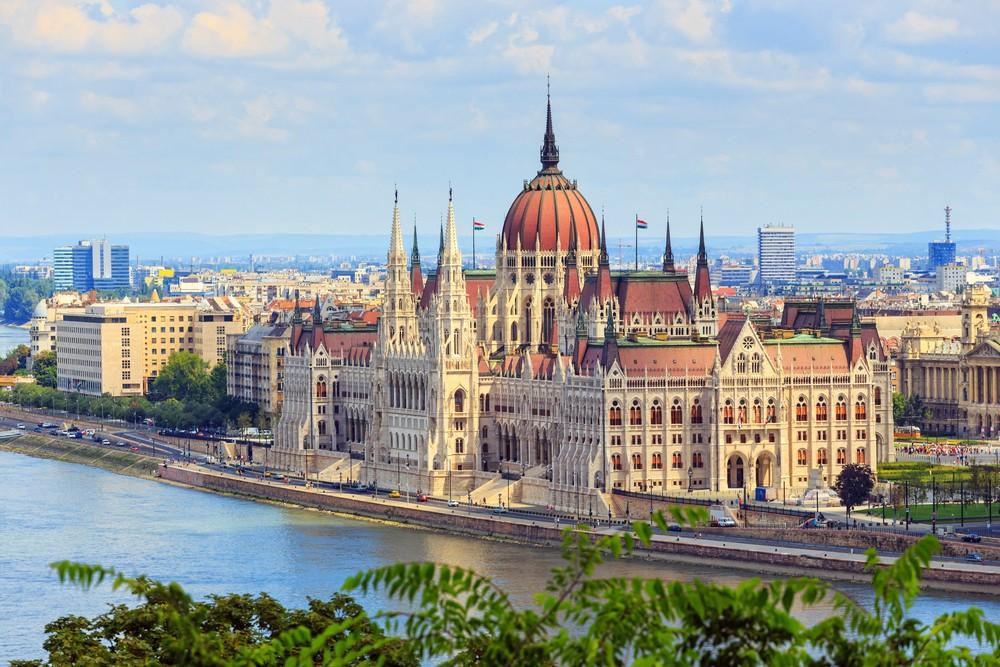The sun of summer has baked the old walls of the village warm. It is the region where swallows feel very comfortable and where the bees buzz around the fig trees. Here, in the south of Hungary, the soil is fertile, and it allows a good wine to flourish. We are talking about Transdanubia, one of the most romantic regions in Hungary. There, where Danube Swabians, Romanians, Serbs and Croats once followed the call of Empress Maria Theresa and settled with the Magyars. With the patience of an angel and great perseverance, they urbanized this country, which in the meantime also took a liking to the Ottoman Sultan Süleiman the Magnificent. He was buried in the village of Szigetvar after his troops lost an important battle. Hungary enjoys many faces and a trip there is a journey to nature, enjoyment and culture.
In the Hungarian capital Budapest , the chains of the historic suspension bridge over the Danube are given a golden coat of paint in the dark. They shine as a symbol of regained freedom. Within sight of the bridge rises the parliament – a hundred meters high and two hundred and fifty meters long. Some Hungarians think that this defiant building is also something of a symbol. This for the megalomania of an era. The gigantic Heroes’ Memorial Square in Budapest also has something symbolic, because there kings and princes are illuminated on their stone pedestals. None of them were granted the privilege of preventing this country from falling under the thumb of foreign powers.
Hungary is no longer Marx and Engels. And it is no longer the home of the charming “Piroschka” from the film with Liselotte Pulver. Hungary is a lively present, blessed with wide steppes and an almost melancholic landscape. As a holidaymaker, you can even live here behind lock and key. In castles and manor houses that have been converted into posh hotels. Of course, with a park around it and all this at prices that holidaymakers in many other countries can only dream of. The “Palota” is one of the most elegant hotel addresses in this country – located in the middle of the Bükki-Nemzeti National Park. Where formerly deserving workers of the people and trade union officials were pampered, a waterfall still rushes into Lake Hámori next to the old splendour.
The hilly land between the Danube and Drava is lovely, where the Celts and Romans planted vines and pressed grapes. The Mediterranean climate of the region in southwestern Hungary not only delights the numerous holidaymakers who spend the most beautiful days of their year here, but also the winegrowers. The composer Franz Liszt once worked in the small town of Szekszárd, who is now commemorated by a music school. Traces of the Habsburg era can be found in the county house, which was built on the ruins of an old Benedictine abbey, and in the beautiful church.

The Eldorado for nature lovers is the Gemenc Forest Nature Reserve, which is located in the floodplain of the Danube and where one of the most beautiful alluvial forests in Europe has developed. It is an area that is easy to hike and that you can also enjoy while cycling. Wild boars and deer live in the forests, and white-tailed eagles and black storks circle above everything.
All Hungarians are probably familiar with Mohácz, because this name is synonymous with the memory of a historic defeat of the Magyars at the hands of the Ottomans. However, all this happened as early as 1526. After all, a park in Mohácz commemorates the battle that strengthened the Habsburgs’ sphere of influence and led to the Ottoman conquest of large parts of Hungary and Croatia. Traces of the multicultural heritage of this country can also be found in the dialect of many inhabitants. This is the case in Nagynyárád, where not only old customs and old crafts are cultivated, but also a dialect that sounds old-fashioned southern German and is interwoven with Hungarian rags. Hungary – that is also the breath of history and a pinch of yesterday’s dream.
Travel information Hungary
| Capital | Budapest |
|---|---|
| Form of government | parliamentary republic Parliamentary system |
| Currency | Forint (HUF) |
| Area | approx. 93,036 km² |
| Population | approx. 9,830,485 (2016) |
| Languages | Hungarian |
| Electricity grid | 230 volts, 50 Hz |
| Area code | +36 |
| Time zone | UTC+1 CET UTC+2 CEST (March to October) |


